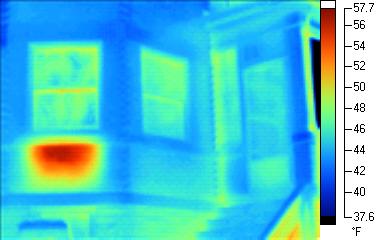Video at: http://on.ted.com/4R
Rachel Armstrong: Architecture that repairs itself?
Posted in Modular Typologies_Composites on January 24, 2010 by latoszekCommon 100 amp Breaker Panel Described
Posted in Domestic Infrastructures_Electrical on January 14, 2010 by latoszekDomestic Electrical System Overview
Posted in Domestic Infrastructures_Electrical on January 14, 2010 by latoszek
 Need help understanding all this? Me too ask Larry Dimock aka Circuit Detective @ www.thecircuitdetective.com
Need help understanding all this? Me too ask Larry Dimock aka Circuit Detective @ www.thecircuitdetective.com
Metal Matrix Composites
Posted in Modular Typologies_Composites on January 13, 2010 by latoszekMetal Matrix Composites (MMC) have been the subject of scientific investigation and applied research for about three decades, but these advanced materials have been introduced only gradually in particular engineering components, such as space shuttle and satellite components, jet fighter aircraft parts, combustion engine components, brake rotors or heat sinks for electronic systems. their greatest asset is the combination of properties of a metal matrix with those of a reinforcement, usually ceramic, providing a potential for tailoring material properties to meet specific and challenging requirements. there is a great variety of material combinations (ingredients, volume fractions and shape, processing) giving rise to a wide spectrum of types of mmc, each with a specific property profile. on the other hand this extraordinary variety complicates the know-how transfer to industry and hinders the acceptance by engineers developing new products.
Self-Healing Composites_Concrete Example
Posted in Modular Typologies_Composites on January 13, 2010 by latoszekMore flexible than traditional concrete, ECC acts more like metal than glass. Traditional concrete is considered a ceramic. Brittle and rigid, it can suffer catastrophic failure when strained in an earthquake or by routine overuse, Li said. But flexible ECC bends without breaking. It is studded with specially-coated reinforcing fibers that hold it together. ECC remains intact and safe to use at tensile strains up to 5 percent. Traditional concrete fractures and can’t carry a load at .01 percent tensile strain.
The average crack width in [the] self-healing concrete is below 60 micrometers. That’s about half the width of a human hair. His recipe ensures that extra dry cement in the concrete exposed on the crack surfaces can react with water and carbon dioxide to heal and form a thin white scar of calcium carbonate. Calcium carbonate is a strong compound found naturally in seashells. In the lab, the material requires between one and five cycles of wetting and drying to heal.
Self-Healing Composites_Carbon Fibre Reinforced Polymer Example
Posted in Modular Typologies_Composites on January 13, 2010 by latoszekSelf-healing is a novel alternative to damage tolerant design and removes the need to perform temporary repairs to damaged structures. It derives inspiration from biological responses to damage, such as the human process of haemostasis, in order to impart an autonomous healing functionality into a composite material. This technology has the potential to mitigate damage resulting from an impact event, thereby providing an opportunity to improve the design allowables or offer other benefits such as reduced maintenance and inspection schedules.
When a microcrack forms in the composite material, it will spread through the material. By doing so, this crack will rupture the microcapsules and release the healing agent. This healing agent will flow down through the crack and will inevitably come into contact with the Grubbs’ catalyst, which initiates the polymerization process. This process will eventually bond the crack closed. In tests, the self-healed composite material regained as much as 75 percent of its original strength.









